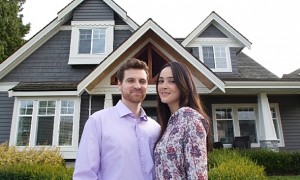Choosing the right mortgage rate can be difficult. There are many different options, and what’s the best choice for one person may not be for another. When borrowers begin the mortgage process, they first need to develop an understanding of mortgage rates. Then, the challenge becomes identifying what type of mortgage meets their individual needs. Here are two questions every home buyer should ask themselves when choosing a mortgage rate:
- Do I want a fixed rate or adjustable rate mortgage (ARM)?
Borrowers have a choice of two types of loans, fixed rate or adjustable. In short, fixed rates mean the monthly payments never change. ARMs offer fixed rate terms for, usually, five or seven years followed by rates that can change once a year after that.

“I’m a big fan of fixed rate mortgages,” said Greg McBride, chief financial analyst for Bankrate.com, a leading mortgage loan information site. “For home buyers, it’s the best gauge of affordability. If you can’t afford a home with interest rates at below 4%, you can’t afford a home.”
ARMs are cheaper initially: At recent interest rates, the monthly payment for an ARM would save about $60 a month on a 30-year fixed with a $200,000 principal. But for many borrowers, that may not be enough savings to offset the uncertainty of potential adjustments.
For others, however, adjustable rate loans can make sense, according to Keith Gumbinger of HSH.com, a mortgage information provider. “ARMs work well with short-term forms of ownership,” he said. “If you think you’ll be there only five or six years, ARMs will save you money.”
Other candidates for ARMs are households whose incomes are likely to rise, such as a one-income household with a partner who plans to return to the work force in a couple of years. They could opt for a more affordable payment during the lean times, knowing that, when their costs rise, they’ll be in a better financial position to afford the higher payments.
- If I have a fixed rate mortgage, should I choose a 30-year or 15-year?
The shorter the term of the fixed rate mortgage, the lower the interest rate, but the higher the monthly payments. On a $200,000 loan, a 15-year fixed at current rates will cost about $1,376 a month, $460 more than the payments on a 30-year mortgage.
Of course, the loan will be paid off in half the time, saving borrowers more than $80,000 in interest over the full course of the mortgage.
According to McBride, borrowers should opt for 15-years only when they can afford to do so without harming their other financial goals.
“Handcuffing yourself to higher monthly payments is bad if it prevents you from investing in tax-advantaged retirement accounts or if you’re unable to set aside enough cash in an emergency fund,” he said.
If you can’t max out your 401(k) payments because your mortgage payments are too steep, you’ll end up costing yourself a lot of money in the long run.
But if you’re convinced that you have enough income and savings, then go for the 15-year. You may be the first one on your block to be mortgage-free.
In our third and last installment of this series, we’ll look at other money-saving tips and tricks that could help you shave down the cost of your mortgage or even get ahead on a few payments. Stay tuned!







Secondly, by following a risk based testing method to enterprise
continuity, this highlights the areas not to check, bby prioritising the principle dangers to enterprise and therefore identifying
areas of negliigible or zero danger.
I really like the idea of using an ARM when you know that you won’t own the property for a very long time. Like you said, ARMs tend to be cheaper initially, and the opportunity for the rates to increase would be stunted. Plus, if you mentioned something like that to your mortgage broker, then they would probably be able to find you a good rate that won’t increase much over those 5-6 years as well.